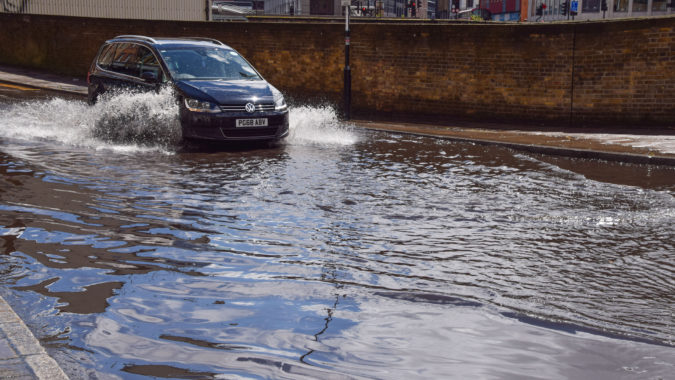This week we marked ten years since the Climate Change Act. Since the passing of this key piece of legislation, we as a country have become international leaders in this field – yet there is clearly much more to do.
As well as reducing carbon emissions we also need to prepare for the effects climate change could bring, including extremes of weather such as droughts. That’s why I was pleased to see that the plans announced by Michael Gove to make our water resources more resilient matched some of our own recommendations.
Earlier this year we published our report, Preparing for a drier future. Based on robust analysis and research, as well as in-depth discussions with experts across the water industry and environmental science, it offered a stark warning about the state of supplies in this country.
Our work showed that we are losing as much as three billion litres of water every day to leakages; that UK households consume far more water than our European neighbours, and that we have a lack of new supply infrastructure. These all make the network far less resilient than it should be to future shocks.
These factors are particularly concerning in the context of climate change, as we estimate an additional three billion litres of water is needed every day just to maintain the current level of resilience. Without action now, measures such as hosepipe bans, or even the use of standpipes and water rationing, could become more frequent for households and business. Through the National Policy Statement the Government has also set a clear aim that companies’ plans will deliver resilience to severe droughts. This means reducing the chance of severe restrictions by 2050 from around one-in-four to one-in-seven.
It is therefore greatly encouraging that the Government is acting on our recommendations to make our water supplies far more resilient to these weather extremes. The draft National Policy Statement states a clear need for new water resources infrastructure, making use of the evidence that we have provided. It noted that the capacity from new infrastructure proposed in companies’ plans is roughly in line with the recommendations of the Commission. The Policy Statement also acknowledges the importance of making use of the whole set of infrastructure options, and in particular the need for a better-connected network of transfers so water can be moved from areas in surplus to those in need.
Through the National Policy Statement, the Government has also set a clear aim that companies’ plans will deliver resilience to severe droughts. The statement also says that Ministers will consider our proposed higher level of resilience to extreme drought for future water resource planning rounds.
I was also pleased to hear the Environment Secretary announce his plan to set a target to halve water leakages by 2050 – something I know water companies are actively looking to adopt. But that doesn’t mean there is nothing else to do to reduce the amount of water we use: far from it. We have recommended that the Department for Environment, Food and Rural Affairs request all companies to consider systematic roll out of smart meters. This will help reduce household average daily consumption from 141 litres to nearer 118 litres. We look forward to the water conservation report that the Government has planned for the near future.
As recent stark warnings from the Inter-Governmental Panel on Climate Change have shown, there needs to be concerted effort now to reduce global greenhouse gas emissions and help mitigate the worst effects that rising temperatures could bring. We need to ensure that the country’s infrastructure is resilient to the changing climate that we could face in the future. For the vital resource of water, this new National Policy Statement will support companies in taking the actions needed now to ensure our water supplies are resilient to the long-term threat posed by a changing climate and rising population.




